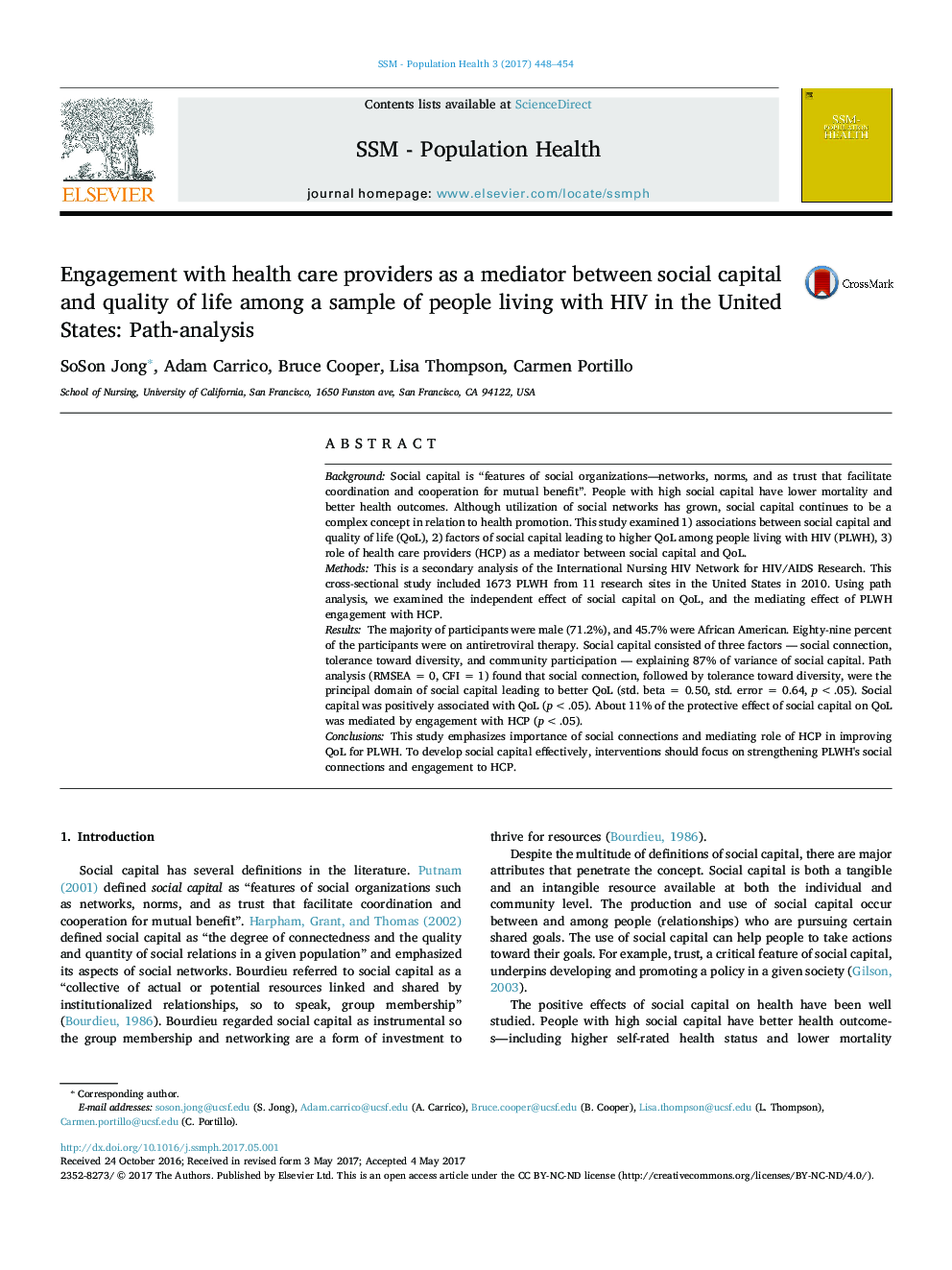| کد مقاله | کد نشریه | سال انتشار | مقاله انگلیسی | نسخه تمام متن |
|---|---|---|---|---|
| 5123277 | 1487259 | 2017 | 7 صفحه PDF | دانلود رایگان |

- Social capital improves quality of life.
- Social capital has three factors: social connection, community participation, and tolerance towards diversity.
- Social connection is seminal domain of social capital to improve quality of life for people living with HIV.
- Engagement with health care provider mediates the relationships between social capital and quality of life.
BackgroundSocial capital is “features of social organizations-networks, norms, and as trust that facilitate coordination and cooperation for mutual benefit”. People with high social capital have lower mortality and better health outcomes. Although utilization of social networks has grown, social capital continues to be a complex concept in relation to health promotion. This study examined 1) associations between social capital and quality of life (QoL), 2) factors of social capital leading to higher QoL among people living with HIV (PLWH), 3) role of health care providers (HCP) as a mediator between social capital and QoL.MethodsThis is a secondary analysis of the International Nursing HIV Network for HIV/AIDS Research. This cross-sectional study included 1673 PLWH from 11 research sites in the United States in 2010. Using path analysis, we examined the independent effect of social capital on QoL, and the mediating effect of PLWH engagement with HCP.ResultsThe majority of participants were male (71.2%), and 45.7% were African American. Eighty-nine percent of the participants were on antiretroviral therapy. Social capital consisted of three factors - social connection, tolerance toward diversity, and community participation - explaining 87% of variance of social capital. Path analysis (RMSEA = 0, CFI = 1) found that social connection, followed by tolerance toward diversity, were the principal domain of social capital leading to better QoL (std. beta = 0.50, std. error = 0.64, p<.05). Social capital was positively associated with QoL (p<.05). About 11% of the protective effect of social capital on QoL was mediated by engagement with HCP (p<.05).ConclusionsThis study emphasizes importance of social connections and mediating role of HCP in improving QoL for PLWH. To develop social capital effectively, interventions should focus on strengthening PLWH's social connections and engagement to HCP.
Journal: SSM - Population Health - Volume 3, December 2017, Pages 448-454